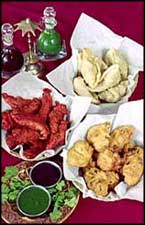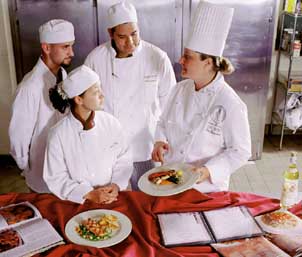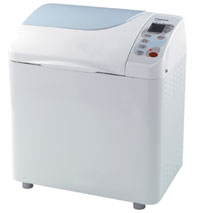Under her care, greenhouse restored

Copyright © 2005 Blethen Maine Newspapers Inc.
AUGUSTA -- René Albison's "secret garden" at Capital Area Technical Center isn't much of a secret anymore. Students get excited about working in the greenhouse Albison and her students recently brought back to life, proudly noting when a seed they planted grows into a thriving, food-bearing plant. Teachers come by, seeing if the greenhouse has any fresh lettuce to spare. And students in the culinary arts program at the technical center use garden-grown vegetables and herbs such as oregano and sage in their cooking. Before last year, the greenhouse at Capital Area Technical Center was little more than a neglected, rundown storage space. Albison -- who teaches life, earth and plant science, among other classes, in the diversified occupations program at the technical center -- decided to take on the task of putting the greenhouse back to its original use as a greenhouse, not a storage building. "I knew my students really needed some kind of science lab experience," she said of the decision, which resulted in her spending hundreds of hours of her own time fixing up the structure and tending to the plants inside it. "I just decided I was going to take it upon myself to bring it back. I don't know why it closed down, but it has just been sitting here for years and years. It's a nice resource. The students are really proud of it. Kids who I wouldn't think would be into that sort of thing. They love to plant a seed and watch it grow." She uses the greenhouse to teach science. Her students and students in a consumer math class at the technical center grow vegetables and herbs in the greenhouse, selling them to raise money to put back into the program. The project also teaches students math lessons about pricing and budgeting. Technical center Director Scott Phair noted that the project has been done almost entirely with grant funding and with labor by other technical center students and staff. He calls the greenhouse "René's secret garden." "She really has squeezed money out of a rock," Phair said. "She did some significant rehabbing to bring it back. She's made an extraordinary difference." Albison got grant funding from Home Depot to buy soil, got Johnny's Selected Seeds to donate seeds, and applied for and received a $2,600 grant from the Perloff Foundation. Plumbing and heating students at the technical center, which takes students from several sending schools, got the heat and water running in the greenhouse. Building construction students built large wooden boxes to hold the plants. Machine tool students made and installed metal braces for the ceiling. And diversified occupations students installed an automatic watering system to keep the plants from drying out. "I've probably been a pain in the neck, asking classes to help," she said. "But they've all been really nice." In the future, she said, she hopes to see a horticulture program created at the technical center. In the meantime, she and her students are planting a fresh crop of tomatoes and lettuce. And maybe some cucumbers and spinach. Keith Edwards -- 621-5647 kedwards@centralmaine.com








